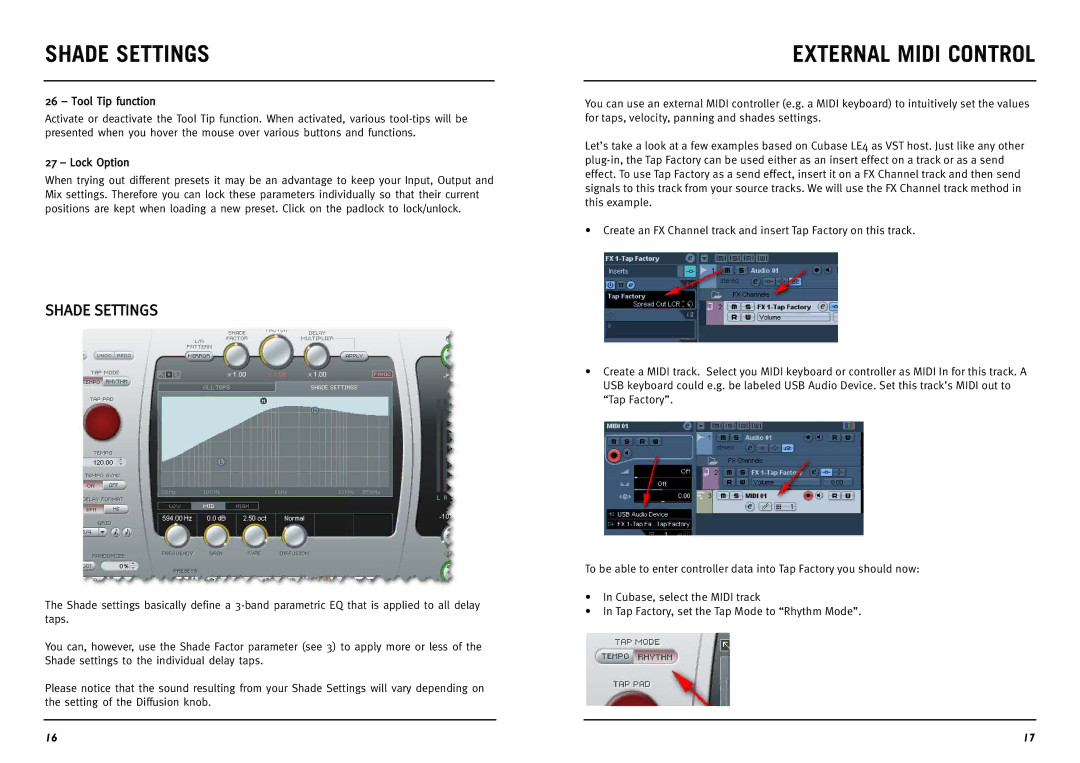
SHADE SETTINGS
26 – Tool Tip function
Activate or deactivate the Tool Tip function. When activated, various
27 – Lock Option
When trying out different presets it may be an advantage to keep your Input, Output and Mix settings. Therefore you can lock these parameters individually so that their current positions are kept when loading a new preset. Click on the padlock to lock/unlock.
EXTERNAL MIDI CONTROL
You can use an external MIDI controller (e.g. a MIDI keyboard) to intuitively set the values for taps, velocity, panning and shades settings.
Let’s take a look at a few examples based on Cubase LE4 as VST host. Just like any other
•Create an FX Channel track and insert Tap Factory on this track.
SHADE SETTINGS
The Shade settings basically define a
You can, however, use the Shade Factor parameter (see 3) to apply more or less of the Shade settings to the individual delay taps.
Please notice that the sound resulting from your Shade Settings will vary depending on the setting of the Diffusion knob.
•Create a MIDI track. Select you MIDI keyboard or controller as MIDI In for this track. A USB keyboard could e.g. be labeled USB Audio Device. Set this track’s MIDI out to “Tap Factory”.
To be able to enter controller data into Tap Factory you should now:
•In Cubase, select the MIDI track
•In Tap Factory, set the Tap Mode to “Rhythm Mode”.
16 | 17 |
